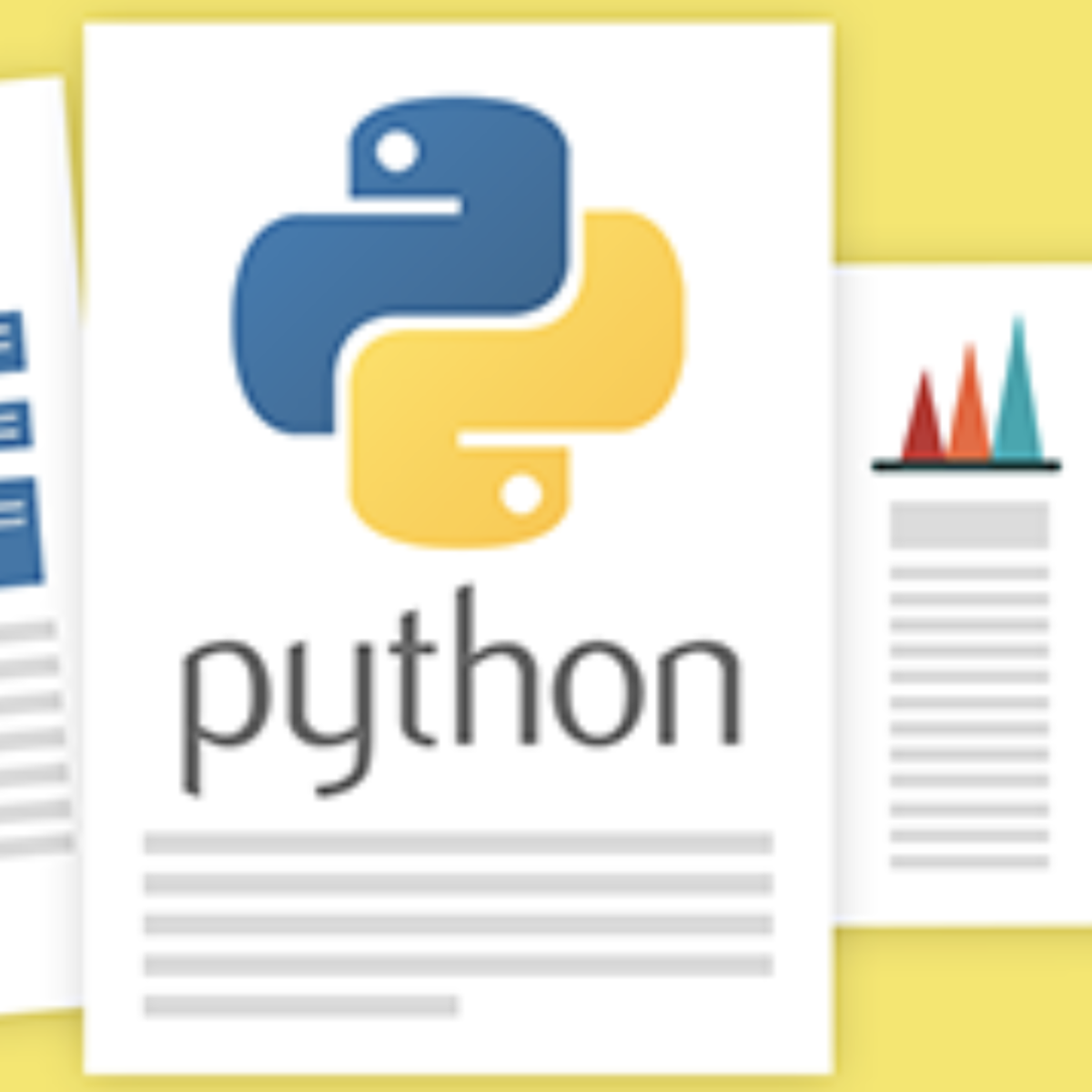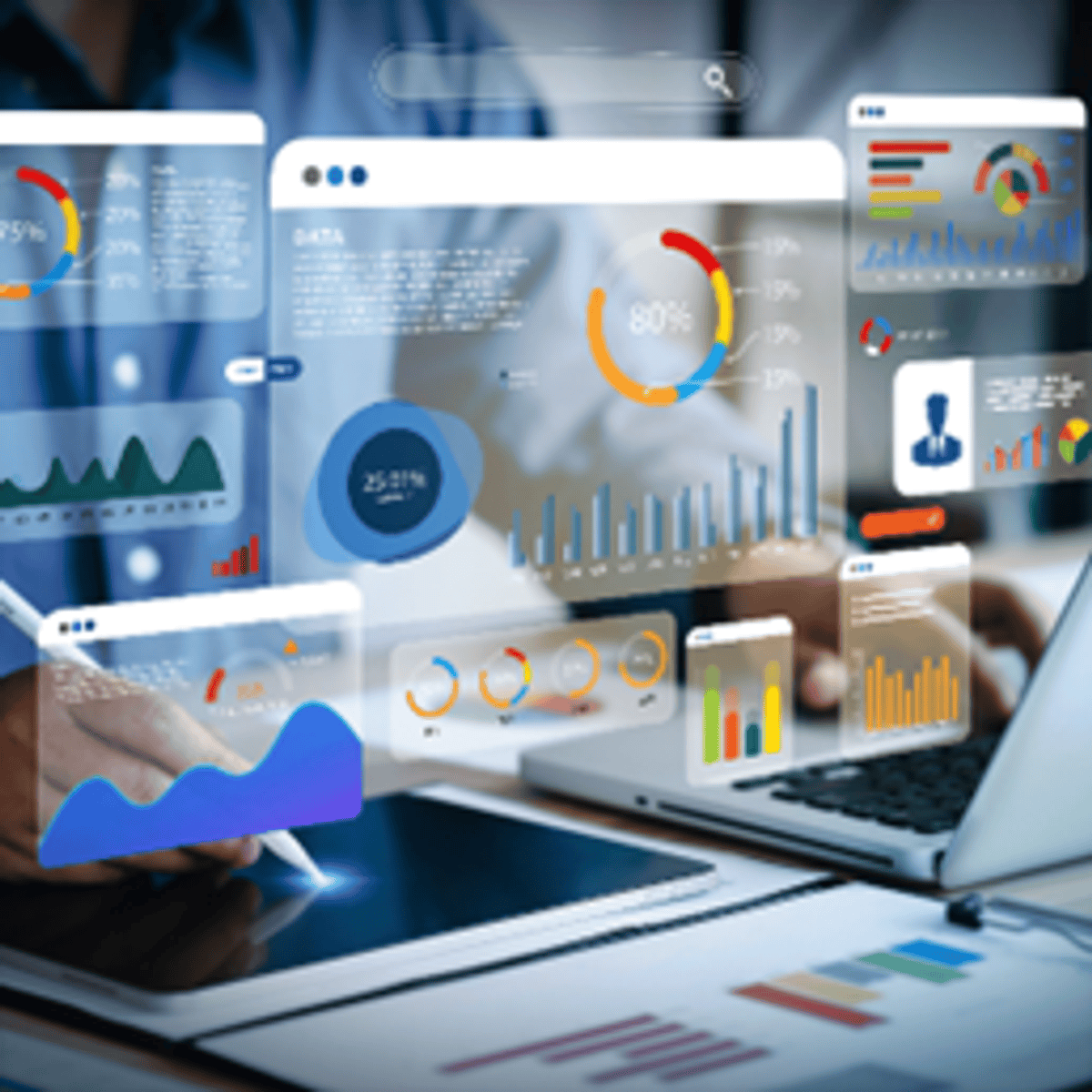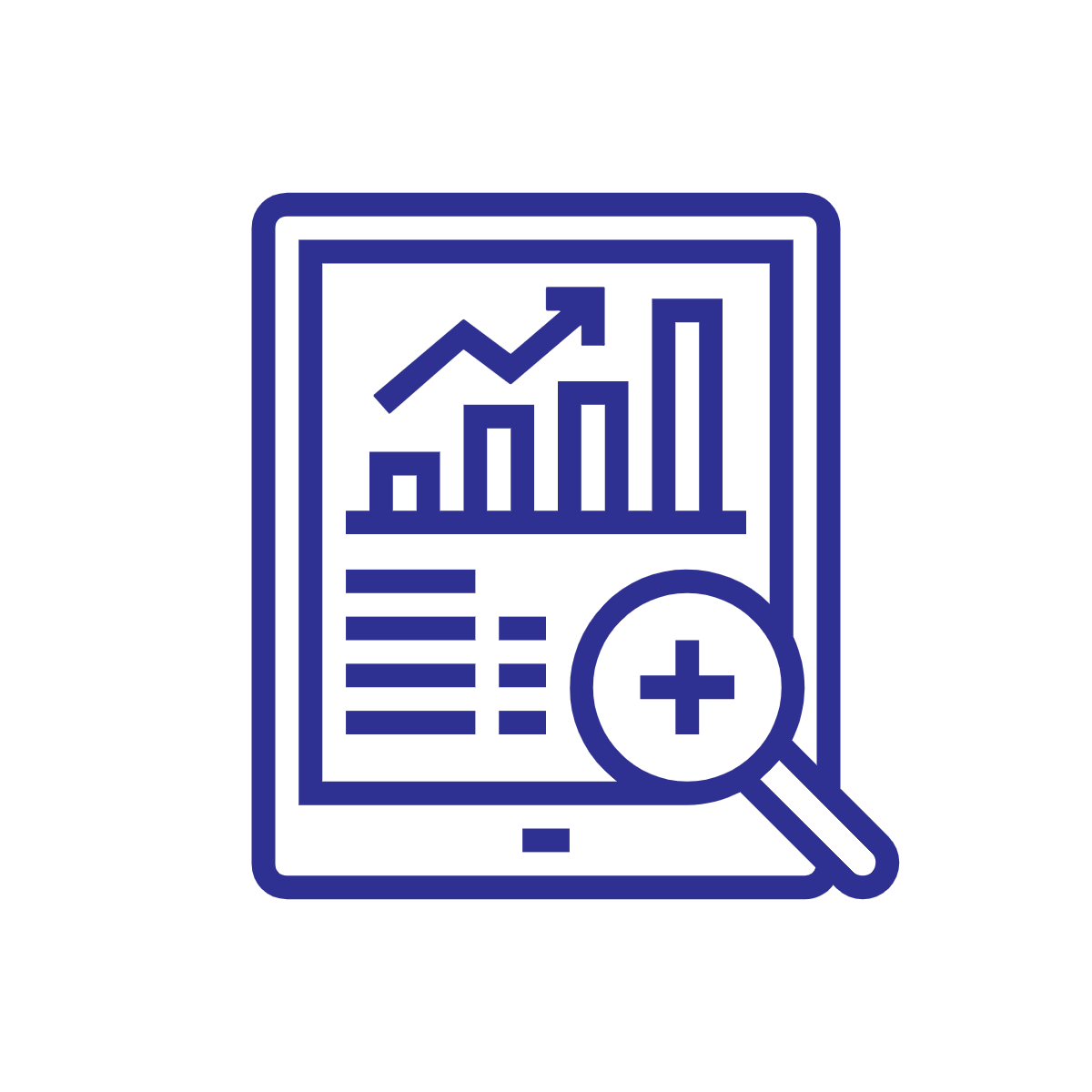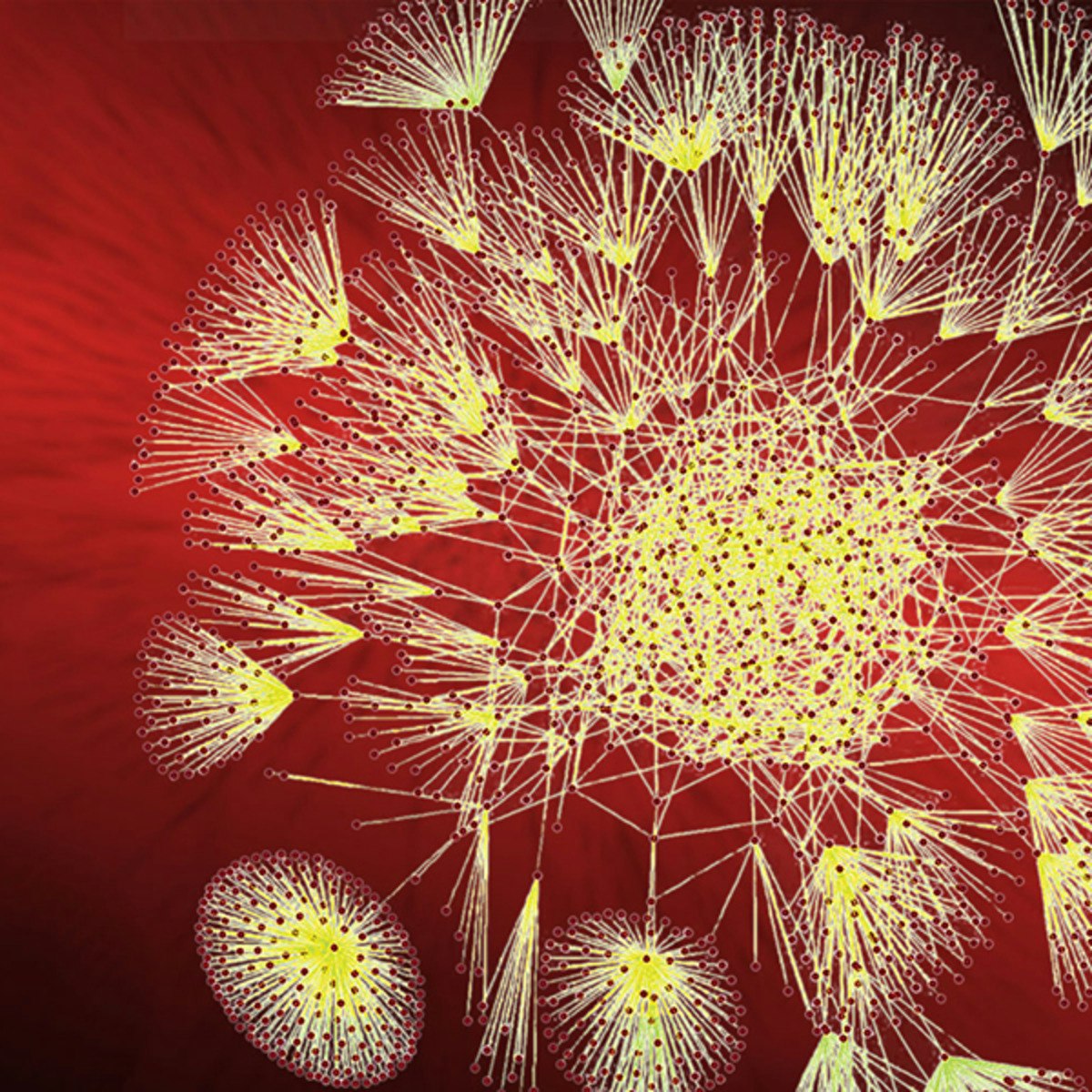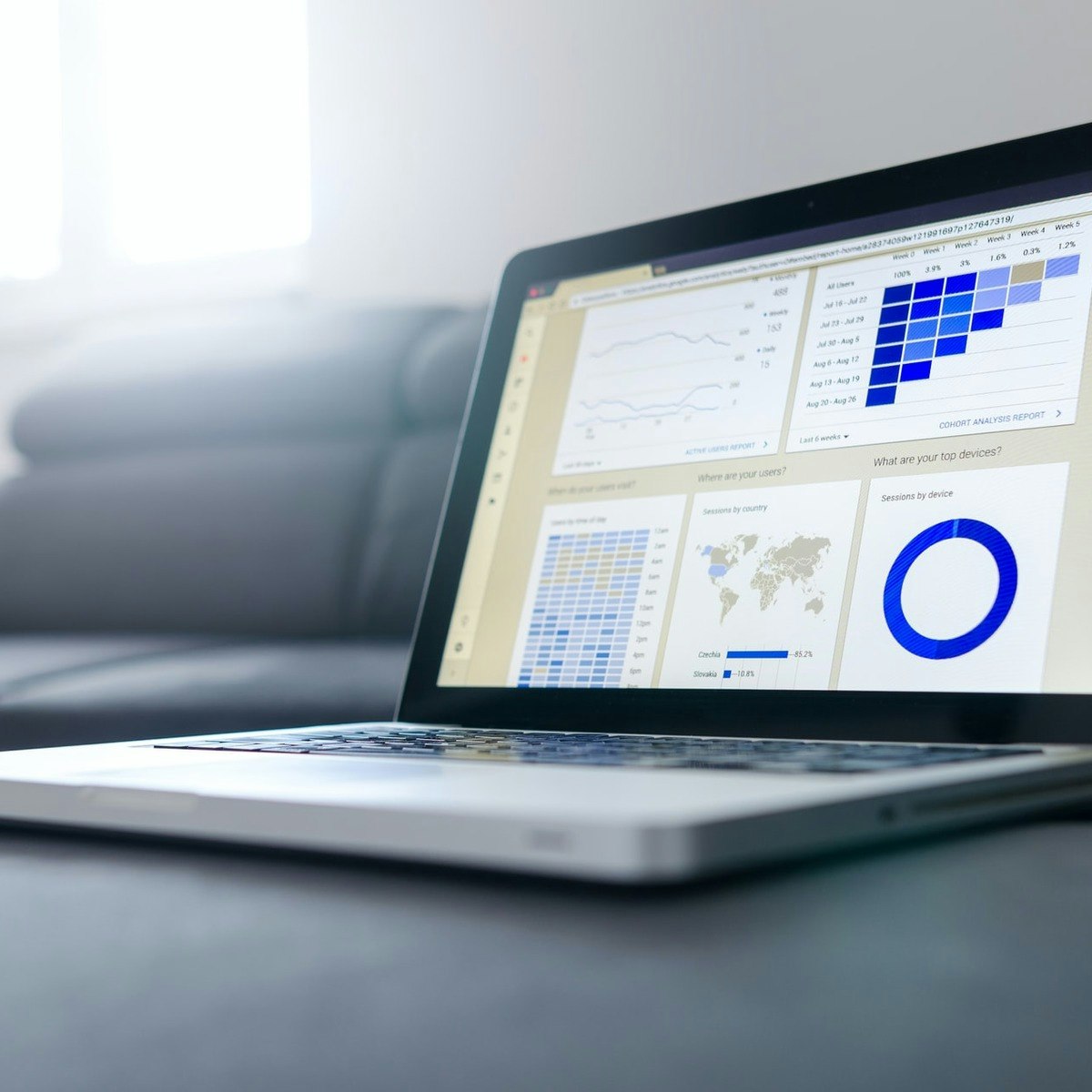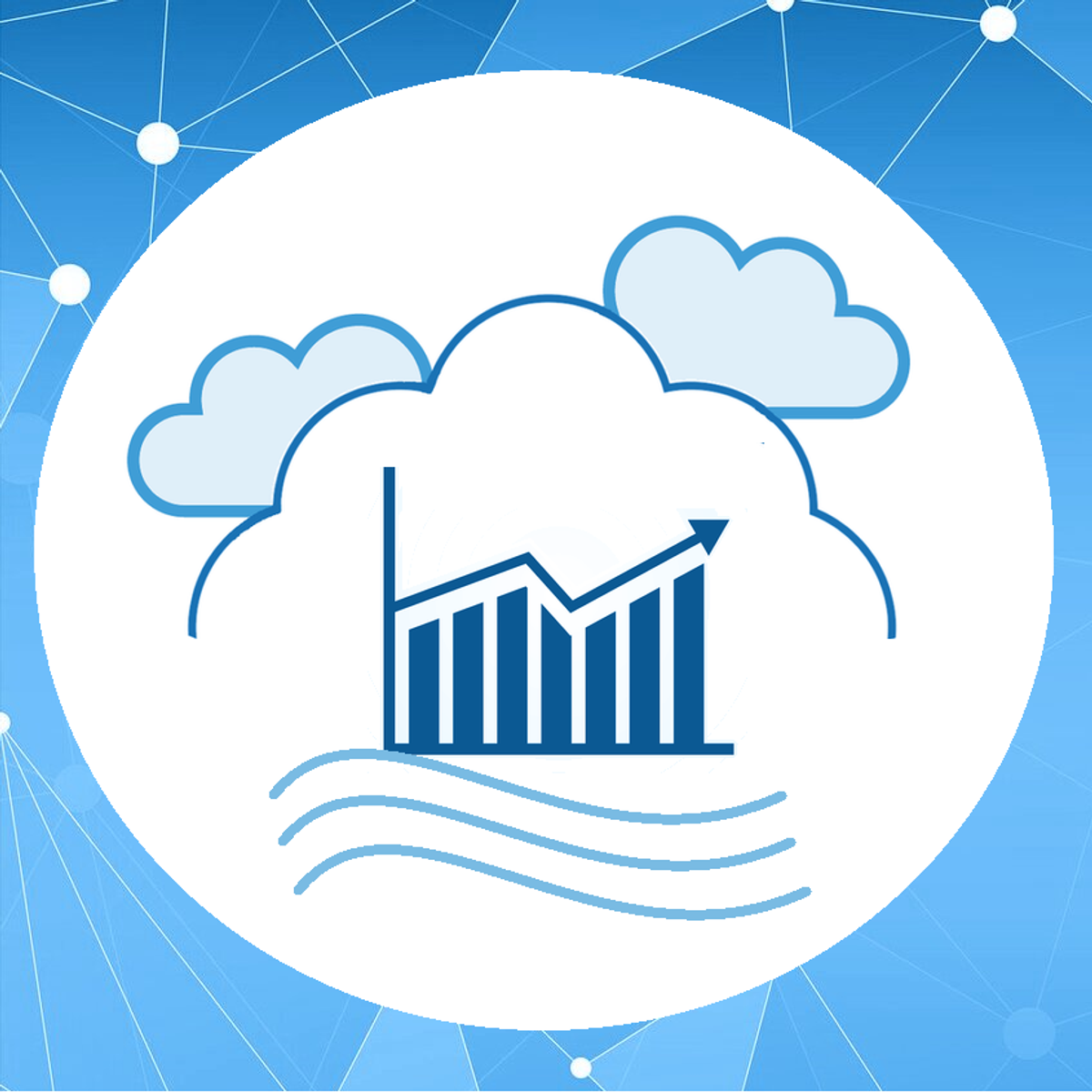Data Visualization Specialist
Comprehensive Guide to Becoming a Data Visualization Specialist
A Data Visualization Specialist is a professional who transforms complex data into understandable and engaging visual formats. They act as a bridge between raw data and the people who need to understand it, creating charts, graphs, dashboards, and interactive visualizations that reveal insights and facilitate informed decision-making. This role is crucial in helping organizations identify trends, communicate findings, and ultimately make better data-driven choices.
Working as a Data Visualization Specialist can be incredibly engaging. You'll have the opportunity to blend analytical thinking with creative design, turning numbers and figures into compelling visual stories. The ability to make complex information accessible and impactful is a highly valued skill, and as a specialist, you'll play a key role in shaping how organizations understand and utilize their data. Furthermore, the field is constantly evolving with new tools and techniques, offering continuous learning and growth opportunities.
Introduction to Data Visualization Specialist
This article delves into the multifaceted career of a Data Visualization Specialist. We will explore the core responsibilities, the pivotal role these specialists play in data-driven decision-making, the key industries that employ them, and how this profession has evolved in our increasingly digital world. Our aim is to provide a thorough understanding of this career path, helping you assess if it aligns with your aspirations.
Whether you're a student exploring future options, a professional considering a career change, or someone already working in a data-related field, this guide will offer valuable insights into the world of data visualization. We'll cover the necessary skills, educational routes, career progression, and the exciting future of this dynamic profession.
Definition and Core Responsibilities
A Data Visualization Specialist is essentially a data storyteller. Their primary responsibility is to take raw, often complex datasets and translate them into visual representations like charts, graphs, dashboards, and interactive reports. These visuals are not just aesthetically pleasing; they are designed to make data easier to understand, interpret, and act upon by various audiences, including those without a technical background.
Core responsibilities often include collaborating with data analysts and scientists to understand the underlying data and identify key insights that need to be visualized. They design and create these visualizations using specialized software and tools, ensuring accuracy and clarity. A significant part of the role involves iterating on designs based on feedback from stakeholders to enhance the impact and usability of the visualizations.
Beyond creation, specialists may also be involved in researching and testing new visualization technologies, collecting and cleaning data, and ensuring that the final visual outputs align with business objectives. They provide visual, technical, and sometimes editorial guidance to ensure the data narrative is compelling and effectively communicated.
Role in Data-Driven Decision-Making
Data Visualization Specialists play a pivotal role in enabling data-driven decision-making within organizations. By transforming complex datasets into clear and interactive visuals, they empower stakeholders at all levels to quickly grasp complex information, identify patterns, and spot emerging trends. This accelerated understanding allows businesses to make faster, more informed strategic choices.
Effective data visualization helps to democratize data, making it accessible beyond the confines of the analytics team. When insights are presented visually, they become easier for non-technical audiences to understand and act upon. This facilitates better communication and collaboration across departments, leading to more aligned and effective business strategies.
Ultimately, the work of a Data Visualization Specialist directly influences key business decisions, from operational adjustments and marketing strategies to product development and risk management. Their ability to distill complex data into actionable insights is a critical component of a successful data-driven culture.
Key Industries Employing Specialists
Data Visualization Specialists are in demand across a wide array of industries. Any sector that collects and utilizes data to make decisions can benefit from their expertise. Some of the most prominent industries include finance, healthcare, e-commerce, marketing, and government.
In finance, specialists help visualize market trends, investment portfolios, and financial risk. The healthcare industry uses data visualization to understand patient data, track disease outbreaks, and optimize treatment plans. Retail and e-commerce businesses leverage visualizations to analyze customer behavior, forecast demand, and optimize supply chains. Marketing teams use visual data to understand campaign performance and target audiences more effectively.
Other significant sectors include technology, research, education, transportation and logistics, and even non-profit organizations. The consistent factor is the growing volume of data and the need to extract meaningful insights to drive progress and efficiency. As big data continues to expand, the need for skilled professionals to interpret and present this information visually will only grow.
For those interested in exploring this field, resources like OpenCourser's Data Science category offer a wide range of courses to build foundational knowledge.
Evolution of the Role in the Digital Age
The role of the Data Visualization Specialist has evolved significantly with the advent of the digital age and the explosion of big data. Historically, data visualization has roots in cartography and early statistical graphics, with pioneers like William Playfair laying the groundwork in the 18th century by inventing common chart types like bar and pie charts. For a long time, these visualizations were often static and manually created.
The proliferation of computers, starting in the latter half of the 20th century, marked a rebirth for data visualization. Computers provided the ability to process and visualize vast amounts of data quickly and efficiently. The work of figures like Edward Tufte in the 1980s further refined the principles of effective data display. Today, the field is characterized by interactive dashboards, real-time data streaming, and the integration of advanced technologies.
The modern Data Visualization Specialist is not just a graphic artist but a professional who combines data analysis, design, and communication skills. The rise of big data, artificial intelligence (AI), and machine learning (ML) continues to shape the role, demanding new skills and creating new opportunities for innovation in how data is presented and understood. According to Coursera, the data visualization market is projected for significant growth, indicating a bright future for this profession.
Core Skills and Competencies
To excel as a Data Visualization Specialist, a unique blend of technical prowess, analytical thinking, and creative communication is essential. These professionals must be adept at not only manipulating and interpreting data but also at transforming it into clear, compelling, and actionable visual narratives. This section will detail the foundational skills and competencies required, from mastering specific software to understanding the nuances of visual storytelling and user experience design.
Technical Skills (e.g., Tableau, Python, D3.js)
Proficiency in a range of data visualization tools and programming languages is fundamental for a Data Visualization Specialist. Mastery of industry-standard software like Tableau and Microsoft Power BI is often expected, as these platforms allow for the creation of interactive dashboards and a wide variety of charts and graphs. Familiarity with QlikView, Sisense, and Google Charts can also be beneficial.
Beyond dedicated visualization software, knowledge of programming languages such as Python (with libraries like Matplotlib and Seaborn) and R is highly valuable. These languages offer greater flexibility and customization for creating bespoke visualizations. For web-based interactive visualizations, proficiency in D3.js (Data-Driven Documents) is a key skill, allowing for the creation of dynamic and sophisticated graphics. Understanding SQL for data querying and manipulation is also a common requirement.
The ability to work with various data sources and databases is crucial, as specialists often need to collect, clean, and prepare data before it can be visualized. Experience with data warehousing concepts and ETL (Extract, Transform, Load) processes can also be advantageous.
Developing these technical skills can be achieved through dedicated learning paths. Online courses provide excellent opportunities to gain hands-on experience with these tools and languages.
Data Storytelling and Communication
Beyond the technical ability to create visualizations, a Data Visualization Specialist must be an adept data storyteller. This involves weaving a compelling narrative around the data, guiding the audience to understand key insights and their implications. Effective storytelling transforms raw data from mere numbers into a format that resonates with viewers and drives action.
Strong communication skills are paramount. Specialists must be able to clearly explain their visualizations, the data sources used, the analysis performed, and the strategic recommendations derived. This often involves presenting to diverse audiences, including stakeholders who may not have a technical background. The ability to translate complex data into simple, understandable visuals and narratives is a core competency.
Audience awareness is critical in tailoring the story and the visuals appropriately. Understanding the audience's level of data literacy and their specific interests helps in creating visualizations that are both engaging and impactful. Active listening and the ability to incorporate feedback are also vital for refining visualizations and ensuring they meet the needs of the stakeholders.
For those looking to hone their data storytelling skills, several resources and courses focus specifically on this crucial aspect of data visualization.
Statistical Analysis Fundamentals
A solid understanding of statistical analysis fundamentals is crucial for a Data Visualization Specialist. While they may not always perform complex statistical modeling themselves, they need to comprehend the statistical concepts underlying the data they are visualizing. This knowledge ensures that the visualizations accurately represent the data and don't lead to misinterpretations.
Familiarity with descriptive statistics (mean, median, mode, standard deviation) is essential for summarizing data effectively. Understanding concepts like correlation, regression, and probability helps in interpreting relationships and trends within the data. Knowledge of data mining practices can also be beneficial.
Data Visualization Specialists often work closely with data analysts and data scientists who perform in-depth statistical analyses. Therefore, a shared understanding of statistical principles facilitates better collaboration and ensures that the visual outputs are statistically sound. This includes recognizing potential biases in data and avoiding misleading representations.
Many introductory statistics courses can provide the necessary foundation for this aspect of the role.
UX/UI Principles for Effective Visualization
Effective data visualization is not just about presenting data; it's about designing an experience that allows users to easily understand and interact with that data. This is where User Experience (UX) and User Interface (UI) principles come into play. A Data Visualization Specialist needs a good grasp of these principles to create visualizations that are not only informative but also intuitive and engaging.
Knowledge of design principles, including layout, typography, and color theory, is essential for creating visually appealing and effective data visualizations. Understanding how people perceive visual information helps in making design choices that enhance clarity and reduce cognitive load. For example, using color strategically can highlight important data points or differentiate categories, while a clean layout can prevent visual clutter.
Interactivity is a key component of modern data visualizations, allowing users to explore data on their own. Specialists may develop interactive dashboards and tools, which requires an understanding of how users will interact with these elements. This includes designing intuitive navigation, clear calls to action, and responsive interfaces. Gathering feedback and iterating on designs based on user experience is a crucial part of this process.
Many resources cover the intersection of design and data.
Educational Pathways
Embarking on a career as a Data Visualization Specialist can be achieved through various educational routes. While a specific "Data Visualization Specialist" degree is uncommon, a strong foundation in related fields, coupled with specialized training and practical experience, can pave the way. This section explores the common academic degrees, certification programs, self-taught avenues, and advanced research opportunities available to aspiring specialists.
It's encouraging to note that transitioning into data visualization from diverse backgrounds is possible. With dedication and the right learning resources, individuals can acquire the necessary skills to enter this exciting and growing field.
University Degrees (Computer Science, Statistics)
A bachelor's or master's degree in fields like Computer Science or Statistics provides a strong educational foundation for a career as a Data Visualization Specialist. A Computer Science degree offers a comprehensive understanding of programming, algorithms, and data structures, which are essential for developing custom visualizations and working with data manipulation tools.
A degree in Statistics equips individuals with critical skills in statistical analysis, probability, and data interpretation. This knowledge is crucial for understanding the nuances of data, ensuring accurate representation, and deriving meaningful insights from visualizations. Other relevant degree programs include data analytics, data science, mathematics, or even graphic design with a strong quantitative component.
These degree programs often include coursework in database management, machine learning, and data mining, all ofwhich are valuable in the broader field of data science and, by extension, data visualization. Many universities now offer specializations or elective courses specifically focused on data visualization, providing students with targeted knowledge and skills.
For those considering advanced studies, online platforms like OpenCourser offer a way to explore various university programs and courses from around the world.
Certification Programs and Bootcamps
For individuals seeking a more direct route into the field, or for those looking to supplement an existing degree, certification programs and data analytics bootcamps offer intensive, focused training in data visualization. These programs are often shorter than traditional degree programs and are designed to equip learners with job-ready skills quickly.
Many certifications focus on specific, widely-used data visualization tools like Tableau or Microsoft Power BI. For example, credentials like the Tableau Desktop Specialist validate skills in data preparation and visualization using that particular platform. Google also offers professional certificates in areas like Data Analytics, which include significant components on data visualization.
Bootcamps, whether in-person or online, provide immersive learning experiences, often incorporating hands-on projects and portfolio-building opportunities. These programs typically cover a range of skills, from data analysis fundamentals to proficiency in popular visualization software and programming languages like Python or R. When choosing a program, consider its curriculum, instructor expertise, career support services, and alumni outcomes.
Online learning platforms are excellent resources for finding and comparing various certification programs and bootcamps.
OpenCourser features a Data Science browse page where you can find a multitude of courses relevant to data visualization, including those that prepare for certifications.
Self-Taught Routes and Portfolio Building
The path to becoming a Data Visualization Specialist is also accessible to dedicated self-learners. With a wealth of online resources, tutorials, and open-source tools available, individuals can acquire the necessary skills at their own pace. This route requires discipline and a proactive approach to learning and practice.
Key steps for self-learners include becoming familiar with popular visualization tools like Tableau, Power BI, and D3.js, as well as programming languages such as Python and R. Sharpening design skills by studying graphic design principles, color theory, and layout strategies is equally important. Consistent practice through creating various types of visualizations, from simple line charts to complex interactive dashboards, is crucial.
Building a strong portfolio is paramount for self-taught individuals (and indeed, for all aspiring specialists). This can be achieved by undertaking personal passion projects, participating in data visualization competitions, or taking on freelance projects. A well-curated portfolio showcases practical skills and creativity to potential employers, demonstrating the ability to transform data into compelling visual stories. Websites like Kaggle offer datasets and competitions that can serve as excellent portfolio-building opportunities.
Online course platforms are invaluable for self-learners, offering structured learning paths and hands-on exercises.
These books can provide a solid foundation for self-study.
PhD Research Opportunities in Visualization
For those inclined towards academic research and pushing the boundaries of the field, pursuing a Ph.D. offers opportunities to contribute to the theoretical and methodological advancements in data visualization. Ph.D. programs relevant to data visualization can be found within Computer Science, Information Science, Human-Computer Interaction (HCI), Statistics, and related interdisciplinary fields.
Doctoral research in data visualization can explore a wide range of topics. These might include developing novel visualization techniques for complex data types (e.g., high-dimensional data, network data, temporal data), studying the perceptual and cognitive aspects of how people understand visual information, designing and evaluating new interactive visualization tools, or investigating the ethical implications of data representation.
Researchers in this area often publish in academic conferences and journals focused on visualization (e.g., IEEE VIS), computer graphics, HCI, and data science. A Ph.D. can lead to careers in academia, research institutions, or advanced research and development roles in industry, where deep expertise in visualization theory and innovation is required.
Prospective Ph.D. students should look for universities with strong research groups in data visualization, information visualization, or visual analytics. Exploring the work of faculty members in these areas can help identify potential advisors and research directions.
Career Progression and Specialization
The career path for a Data Visualization Specialist offers diverse opportunities for growth and specialization. As professionals gain experience and hone their skills, they can advance to more senior roles, take on leadership responsibilities, or focus on niche areas within the broad field of data visualization. This section outlines typical entry-level positions, mid-career trajectories, leadership opportunities, and emerging specializations that are shaping the future of this dynamic profession.
The journey often begins with foundational roles that build practical experience, gradually leading to positions with greater strategic impact and complexity.
Entry-Level Roles (Data Analyst, BI Specialist)
Many Data Visualization Specialists begin their careers in entry-level roles such as Data Analyst or Business Intelligence (BI) Specialist. These positions provide valuable experience in collecting, cleaning, analyzing, and interpreting data – foundational skills for effective visualization. In these roles, individuals often use visualization tools to present their findings and create reports for internal stakeholders.
As a Junior Data Analyst or BI Specialist, you might be responsible for generating routine reports, building basic dashboards, and assisting senior team members with more complex visualization projects. These roles offer the chance to become proficient with industry-standard tools like Tableau or Power BI and to develop an understanding of how data is used within a specific business context.
Other entry points could include roles like Data Visualization Intern or Junior Data Scientist, where data visualization is a key component of presenting data-driven insights. Gaining practical experience in these roles is crucial for building a strong portfolio and advancing in the field.
Online courses can help build the foundational skills needed for these entry-level positions.
Mid-Career Paths (Senior Visualization Engineer)
With a few years of experience, Data Visualization Specialists can progress to mid-career roles such as Senior Data Visualization Specialist or Data Visualization Engineer. At this stage, professionals are expected to have a deeper understanding of visualization principles, advanced proficiency in various tools and programming languages (like D3.js or Python for complex visualizations), and the ability to lead visualization projects.
Senior roles often involve more complex problem-solving, designing sophisticated interactive dashboards, and mentoring junior team members. They might take on responsibilities for developing and maintaining visualization standards and best practices within an organization. Collaboration with diverse stakeholders, including business leaders and technical teams, becomes even more critical.
Some specialists may choose to focus on a particular industry, such as finance or healthcare, developing domain expertise that allows them to create highly relevant and impactful visualizations. Others might deepen their technical skills, becoming experts in specific technologies or visualization techniques. The average salary for a mid-career Data Visualization Specialist can range significantly based on experience, location, and industry, often falling between $70,000 and $120,000 annually, and sometimes higher for specialized engineering roles.
To advance to these roles, continuous learning and skill development are essential.
These books offer deeper insights into advanced visualization techniques.
Leadership Positions (Data Visualization Director)
Experienced Data Visualization Specialists with a strong track record and leadership qualities can advance to positions like Data Visualization Manager or Director of Data Visualization. These roles involve overseeing a team of visualization professionals, setting the data visualization strategy for the organization, and ensuring that visual outputs align with overall business objectives.
In a leadership capacity, individuals are responsible for managing projects, allocating resources, and fostering a culture of data-driven decision-making through effective visualization. They play a key role in influencing major business decisions by ensuring that complex data is presented in a clear, compelling, and actionable manner to executive teams. Strong communication, strategic thinking, and people management skills are crucial at this level.
Salaries for leadership positions in data visualization can be quite competitive, often exceeding $140,000 and potentially reaching over $200,000, depending on the organization's size, industry, and location. These roles represent the pinnacle of the data visualization career path within many organizations, offering significant impact and responsibility.
Emerging Specializations (AR/VR Data Representation)
The field of data visualization is continuously evolving, leading to exciting emerging specializations. One such area is the representation of data in Augmented Reality (AR) and Virtual Reality (VR). AR/VR technologies offer immersive ways to interact with and understand complex datasets, transforming data exploration into a three-dimensional experience. Specialists in this area develop innovative ways to visualize data in these new mediums, pushing the boundaries of traditional data representation.
Another growing specialization is AI-driven visualizations, where artificial intelligence and machine learning techniques are used to automate aspects of the visualization process or to uncover insights that can then be visualized. This can involve AI suggesting the most effective chart types for a given dataset or even generating narrative explanations for the visuals.
Other emerging areas include real-time data streaming visualization for instant analysis, ethical data representation focusing on avoiding bias and ensuring privacy, and sustainability data visualization, which aims to communicate complex environmental and social data effectively. These specializations reflect the growing complexity of data and the increasing need for innovative and responsible ways to make sense of it.
Staying abreast of these trends is important for career growth. Resources like World Economic Forum articles on AR in data visualization can provide insights into these evolving areas.
Tools and Technologies
The landscape of data visualization is rich with a diverse array of tools and technologies, each offering unique capabilities to transform raw data into meaningful insights. From industry-standard software suites to flexible open-source libraries and cutting-edge cloud-based platforms, Data Visualization Specialists have a wide arsenal at their disposal. Understanding these tools is crucial for selecting the right approach for different data types and communication goals. This section will explore the common software stacks, the trade-offs between open-source and proprietary options, the rise of cloud platforms, and the exciting potential of AI-driven visualization tools.
Industry-Standard Software Stack
The industry-standard software stack for data visualization typically includes a combination of powerful, dedicated visualization platforms. Tableau is a dominant player, widely recognized for its user-friendly drag-and-drop interface and its ability to create a wide range of interactive dashboards and worksheets. Microsoft Power BI is another leading tool, especially popular within organizations already utilizing the Microsoft ecosystem. It offers robust business analytics capabilities and seamless integration with other Microsoft services.
Qlik Sense (and its predecessor QlikView) is also a significant tool, known for its associative data engine that allows users to explore data freely. These platforms often provide connectors to numerous data sources, from simple spreadsheets to complex databases and cloud services, enabling specialists to work with diverse datasets.
Beyond these, specialists often complement their toolkit with spreadsheet software like Microsoft Excel for basic data manipulation and charting, and sometimes more specialized tools depending on the industry or specific task requirements. Familiarity with SQL for data extraction and preparation is also a common expectation when working with these tools.
Many introductory courses focus on these widely adopted platforms.
Open-Source vs. Proprietary Tools
Data Visualization Specialists often choose between open-source and proprietary tools, each with its own set of advantages and disadvantages. Proprietary tools, like Tableau and Power BI, generally offer polished user interfaces, extensive customer support, and a wealth of built-in features that allow for rapid development of visualizations. They are often designed for ease of use, enabling even users with limited coding skills to create sophisticated dashboards. However, they typically come with licensing costs, which can be a factor for individuals or smaller organizations.
Open-source tools, on the other hand, provide unparalleled flexibility and customization. Libraries like D3.js (JavaScript), Matplotlib, Seaborn (Python), and ggplot2 (R) allow developers to create virtually any visualization imaginable, tailored precisely to specific needs. They are free to use and benefit from active communities that contribute to their development and provide support. However, mastering these tools often requires stronger programming skills and a steeper learning curve compared to their proprietary counterparts.
The choice between open-source and proprietary often depends on the project requirements, budget, technical expertise available, and the desired level of customization. Many specialists find value in being proficient in a mix of both types of tools to adapt to different scenarios.
Explore these courses to learn popular open-source visualization libraries.
Cloud-Based Visualization Platforms
Cloud-based visualization platforms have become increasingly prevalent, offering scalability, accessibility, and collaborative features. Tools like Google Data Studio (now Looker Studio), Amazon QuickSight, and the cloud versions of Tableau and Power BI enable users to create and share dashboards that can be accessed from anywhere with an internet connection. These platforms often integrate seamlessly with cloud data warehouses and other cloud services, streamlining the data-to-insight pipeline.
One of the key advantages of cloud platforms is their ability to handle large datasets and provide real-time or near real-time data updates, which is crucial for businesses that need to monitor key metrics continuously. Collaboration is also enhanced, as team members can work on dashboards simultaneously and share insights easily with stakeholders.
Furthermore, cloud providers often offer a suite of analytics and machine learning services that can be integrated with their visualization tools, enabling more advanced analyses and predictive insights. The pay-as-you-go pricing models of many cloud services can also be more flexible for businesses compared to traditional software licensing.
Here are some courses that cover cloud-based visualization tools.
AI-Driven Visualization Tools
The integration of Artificial Intelligence (AI) and Machine Learning (ML) is an exciting and rapidly developing trend in the data visualization landscape. AI-driven visualization tools aim to automate and enhance various aspects of the visualization process, making it easier and faster to uncover and communicate insights.
These tools can leverage AI to automatically suggest the most appropriate chart types for a given dataset, identify significant patterns or outliers that should be highlighted, and even generate natural language summaries or narratives to accompany the visualizations. This can significantly speed up the exploratory data analysis phase and help users, especially those with less analytical expertise, to understand the data more deeply. Some platforms are beginning to incorporate features that allow users to ask questions of their data in natural language, with the AI generating relevant visualizations in response.
As AI technology continues to advance, we can expect visualization tools to become more intelligent, predictive, and personalized. For Data Visualization Specialists, this means adapting to these new capabilities and learning how to work alongside AI to create even more impactful and insightful visualizations. While AI can automate certain tasks, the human element of critical thinking, storytelling, and understanding context remains crucial.
Consider this course to understand AI's role in analytics.
The future points towards a collaborative environment where AI assists specialists in generating more sophisticated and nuanced data stories.
Ethical Considerations
As data becomes increasingly integral to decision-making across all sectors, the ethical responsibilities of Data Visualization Specialists take center stage. The power to influence perception and understanding through visual representation carries with it a duty to present data truthfully, transparently, and with sensitivity. This section addresses the critical ethical considerations in data visualization, including challenges related to data privacy and security, the imperative to avoid misleading visualizations, the importance of cultural sensitivity in global data representation, and the ongoing need for bias detection in data interpretation.
Data Privacy and Security Challenges
Data Visualization Specialists often work with sensitive information, including personal data, financial records, or proprietary business intelligence. Ensuring the privacy and security of this data throughout the visualization process is a paramount ethical and legal responsibility. This involves adhering to data protection regulations like GDPR or HIPAA, depending on the data's nature and origin.
Challenges arise in how data is aggregated and displayed. Even anonymized or aggregated data can sometimes be reverse-engineered to identify individuals if not handled carefully. Specialists must be vigilant about the level of granularity in their visualizations, ensuring that individual privacy is not compromised, especially when sharing visuals publicly or with broad audiences. Secure data handling practices, including access controls and data encryption, are essential when working with and storing datasets.
Furthermore, when creating interactive visualizations that allow users to drill down into data, care must be taken to prevent unintentional exposure of sensitive details. Ethical guidelines and organizational policies regarding data privacy and security must be clearly understood and strictly followed.
Avoiding Misleading Visualizations
One of the most significant ethical responsibilities for a Data Visualization Specialist is to create visualizations that accurately and honestly represent the data. Misleading visualizations, whether intentional or unintentional, can distort understanding and lead to flawed decision-making. This is a core tenet of ethical data practice.
Common pitfalls include manipulating scales on axes (e.g., truncating the y-axis to exaggerate differences), using inappropriate chart types that obscure or misrepresent relationships in the data, cherry-picking data points to support a particular narrative, or using 3D charts in ways that make comparisons difficult and inaccurate. Color choices can also inadvertently mislead if not applied thoughtfully, for example, by using colors that have strong emotional connotations in a neutral context, or by using color gradients that imply a magnitude that isn't present in the data.
Maintaining data integrity and transparency about data sources and any transformations applied is crucial. The goal should always be clarity and truthfulness, allowing the data to speak for itself without distortion. Critical self-review and peer review of visualizations can help identify and correct potentially misleading elements.
This book is a valuable resource for understanding how visualizations can deceive and how to create more truthful representations.
Cultural Sensitivity in Global Data Representation
In an increasingly interconnected world, Data Visualization Specialists often create visuals for global audiences. This necessitates a strong awareness of cultural sensitivity in how data is represented. Colors, symbols, and even the way data is ordered can have different meanings and interpretations across cultures.
For instance, certain colors may have positive connotations in one culture and negative ones in another. Icons or symbols that are universally understood in one region might be unfamiliar or even offensive elsewhere. When visualizing geographical data, it's important to use maps that are accurate and respectful of geopolitical sensitivities. Even the directionality of reading (left-to-right vs. right-to-left) can influence how layouts are perceived.
Specialists should strive to create visualizations that are as universally understandable and culturally neutral as possible, especially when the audience is diverse. This may involve researching cultural norms related to visual communication or seeking feedback from individuals representing different cultural backgrounds. The aim is to ensure that visualizations are inclusive and do not inadvertently alienate or miscommunicate to any segment of the audience.
Bias Detection in Data Interpretation
Bias can creep into data visualization at various stages, from the initial data collection and processing to the interpretation and presentation of results. Data Visualization Specialists have an ethical responsibility to be aware of potential sources of bias and to strive for objectivity in their work. This includes biases in the data itself (e.g., sampling bias, historical biases reflected in the data) and cognitive biases that can influence how data is interpreted and visualized.
For example, confirmation bias might lead a specialist to unconsciously emphasize data points that support a pre-existing hypothesis while downplaying contradictory evidence. The choice of visual encodings (e.g., size, color, shape) can also inadvertently introduce bias if not applied carefully and consistently.
Ethical practice involves critically examining the data for potential biases and being transparent about any limitations. It also means designing visualizations that allow viewers to explore the data from multiple perspectives, rather than presenting a single, potentially biased viewpoint. Promoting data literacy among viewers can also help them to critically assess visualizations and identify potential biases themselves. The growing field of AI ethics also intersects here, particularly as AI tools become more involved in generating visualizations, raising questions about algorithmic bias.
Global Market Trends
The field of data visualization is experiencing robust global growth, driven by the ever-increasing volume of data generated across industries and the critical need for organizations to derive actionable insights from this information. Understanding the global market trends is essential for aspiring and current Data Visualization Specialists to navigate career opportunities and stay ahead of the curve. This section will explore regional demand, remote work possibilities, industry-specific growth areas, and the overarching impact of the big data expansion on the profession.
Demand Across Different Regions
The demand for Data Visualization Specialists is a global phenomenon, though it is particularly concentrated in regions with strong technology sectors and a high adoption rate of data analytics. North America, particularly the United States (with tech hubs like Silicon Valley, New York City, San Francisco, and Seattle), currently holds a dominant market share in data visualization. This is driven by the presence of numerous large enterprises and a high level of expenditure on analytics and business intelligence.
Europe is also a significant market, with substantial growth projected, particularly in sectors like retail, e-commerce, transportation, and logistics. Countries with advanced economies and a focus on technological innovation are seeing increased demand for data visualization skills. The Asia Pacific region is anticipated to witness rapid growth, fueled by increasing digitalization, the rise of e-commerce, and government initiatives promoting data-driven economies.
While major metropolitan areas and established tech hubs often have the highest concentration of opportunities, the increasing adoption of data practices by businesses of all sizes means that demand is becoming more widespread.
Remote Work Opportunities
The nature of data visualization work, which is often computer-based and can be performed with access to data and the necessary software tools, lends itself well to remote work arrangements. Many companies, especially in the tech sector and digitally-forward organizations, offer flexibility in terms of work location. This trend has been accelerated by broader shifts towards remote and hybrid work models globally.
Remote opportunities can expand the job market for Data Visualization Specialists, allowing them to work for companies located in different cities or even countries without the need for relocation. Freelancing is also a viable option in this field, with specialists offering their services on a project basis to various clients across industries. Platforms connecting freelancers with projects have made it easier to find such opportunities.
However, effective communication, collaboration, and self-discipline are crucial for success in remote data visualization roles. Regular interaction with team members and stakeholders through virtual means is essential to ensure project alignment and deliver impactful visualizations.
Industry-Specific Growth Areas
While data visualization is valuable across almost all industries, certain sectors are experiencing particularly high growth in demand for these skills. The Information Technology, Services, and Telecommunications sectors are traditionally strong employers of data professionals. The Retail and E-commerce industry is another rapidly growing area, driven by the vast amounts of customer data generated and the need to understand consumer behavior, personalize experiences, and optimize operations.
Healthcare is increasingly relying on data visualization to improve patient outcomes, manage resources, and analyze clinical trial data. The Financial Services (BFSI) sector uses visualization for risk management, fraud detection, and understanding market trends. Furthermore, emerging fields like Artificial Intelligence, Machine Learning, and the Internet of Things (IoT) are generating massive, complex datasets, creating new frontiers and significant opportunities for Data Visualization Specialists who can help make sense of this information.
Government and public administration also represent a considerable area for growth, as public sector organizations increasingly use data to inform policy and improve services.
To explore opportunities in various sectors, you can browse relevant courses on platforms like OpenCourser's browse page, filtering by industry or specific data applications.
Impact of Big Data Expansion
The ongoing explosion of big data is a primary catalyst for the growth and evolution of the data visualization field. As organizations collect and store unprecedented volumes, varieties, and velocities of data from diverse sources like social media, IoT devices, and business transactions, the challenge of extracting meaningful insights becomes more acute. Data visualization provides the essential tools and techniques to navigate this complexity.
Big data necessitates more sophisticated visualization approaches that can handle scale and complexity. Traditional charts may not suffice for visualizing terabytes or petabytes of information. This has spurred innovation in interactive dashboards, real-time visualization techniques, and the use of advanced computational methods to pre-process and summarize data before visualization.
The sheer volume of big data also underscores the importance of efficient data processing and powerful analytical tools. Data Visualization Specialists increasingly need to be comfortable working with data infrastructure that supports big data, including cloud platforms and distributed computing systems. The ability to transform massive, raw datasets into clear, concise, and actionable visual narratives is a highly prized skill in the age of big data.
Courses focusing on big data technologies can be highly beneficial.
The global data visualization market is on an upward trajectory. According to Fortune Business Insights, the market was valued at USD 8.85 billion in 2019 and is projected to reach USD 19.20 billion by 2027, exhibiting a compound annual growth rate (CAGR) of 10.2%. More recent reports suggest even stronger continued growth.
Portfolio Development
For any aspiring or established Data Visualization Specialist, a strong portfolio is arguably the most critical asset for showcasing skills and securing opportunities. Unlike a resume that lists qualifications, a portfolio provides tangible evidence of your ability to transform data into compelling and insightful visuals. It allows potential employers or clients to see your design aesthetic, your technical proficiency, and your ability to communicate complex information effectively. This section will guide you through the key aspects of building an impressive portfolio, including the importance of diverse projects, the distinction between interactive and static samples, the value of client case studies, and the role of personal passion projects.
Showcasing Diverse Projects
A compelling data visualization portfolio should showcase a diverse range of projects. This demonstrates versatility and the ability to adapt your skills to different types of data, industries, and communication goals. Aim to include examples that highlight various visualization techniques, from common chart types like bar graphs and line charts to more complex visuals like heatmaps, network diagrams, or geospatial maps.
Diversity can also be shown through the subject matter of your projects. If possible, include work from different domains (e.g., finance, healthcare, social trends) to illustrate your adaptability. For each project, clearly articulate the problem or question you were addressing, the data sources used, your design choices, and the insights uncovered. Providing context is crucial for viewers to understand the impact of your work.
Consider including projects that demonstrate different stages of the data visualization workflow, from data cleaning and preparation (if applicable) to the final visual output and any accompanying analysis or narrative. This gives a more complete picture of your capabilities.
Many online courses include capstone projects that can be excellent additions to a portfolio.
Interactive vs. Static Visualization Samples
Your portfolio should ideally feature a mix of both interactive and static visualization samples. Static visualizations, such as well-designed charts in a report or infographics, demonstrate your ability to distill complex information into a clear, concise visual for direct communication. They highlight your skills in graphic design, information hierarchy, and crafting a specific narrative.
Interactive visualizations, such as dashboards built with Tableau or Power BI, or web-based visuals created with D3.js, showcase your ability to empower users to explore data themselves. These samples can demonstrate your skills in UX/UI design, creating intuitive navigation, and implementing features like filters, tooltips, and drill-downs. Providing links to live interactive dashboards (if permissible) is highly effective.
When including interactive samples, ensure they are user-friendly and perform well. Briefly explain the interactive features and how they help users gain deeper insights. For both types, high-quality images or screencasts are essential if live versions cannot be shared directly in your portfolio (e.g., due to confidentiality).
These courses can help you build skills in creating both types of visualizations.
For further reading on dashboard design, consider this classic book.
Client Case Studies
If you have undertaken freelance work or projects for specific clients (even pro bono for non-profits or small businesses), presenting these as case studies can significantly strengthen your portfolio. A case study goes beyond just showing the final visualization; it tells the story of the project from start to finish.
A good case study should outline the client's problem or objective, the data challenges encountered, your process for developing the visualization (including tools and techniques used), the final visual solution, and, most importantly, the impact or results achieved for the client. Did your visualization help them make a specific decision, improve a process, or communicate more effectively? Quantifiable results, where possible, are particularly compelling.
Always ensure you have permission from the client before showcasing their project in your public portfolio, especially if it involves sensitive or proprietary data. If direct sharing is not possible, you might be able to create a sanitized or anonymized version that still demonstrates your skills and problem-solving approach.
Personal Passion Projects
Personal passion projects are an excellent way to demonstrate your initiative, creativity, and enthusiasm for data visualization, especially if you are new to the field or looking to explore new techniques or subject areas. These are projects you undertake based on your own interests, using publicly available datasets or data you've collected yourself.
Choose topics that genuinely interest you, as your passion will often shine through in the final product. This could be anything from visualizing sports statistics, analyzing trends in your favorite hobby, exploring social issues, or creating artistic data representations. Passion projects give you complete creative freedom to experiment with different tools, styles, and storytelling approaches without the constraints of client requirements.
Document your process thoroughly, just as you would for a client project. Explain your motivation, data sources, design choices, and what you learned. Sharing these projects on platforms like Tableau Public, GitHub (for code-based visualizations), or your personal blog can help you gain visibility and connect with others in the data visualization community.
Exploring diverse datasets for passion projects can be facilitated by resources like Google Dataset Search.
Future of Data Visualization
The future of data visualization is dynamic and brimming with potential, driven by rapid technological advancements and an ever-increasing reliance on data for insights across all sectors. As we look ahead, several key trends are poised to reshape how Data Visualization Specialists work and the kinds of experiences they create. This section will explore the integration of artificial intelligence, the challenges and opportunities presented by real-time data streaming, the expanding cross-disciplinary applications of visualization, and the growing importance of visualizing sustainability data.
AI Integration in Visualization Tools
Artificial Intelligence (AI) and Machine Learning (ML) are set to profoundly impact data visualization tools and practices. We are already seeing AI features that can automate aspects of the visualization process, such as suggesting optimal chart types for specific data or automatically identifying and highlighting key patterns and outliers. This can significantly speed up the exploratory analysis phase and make sophisticated visualization more accessible to a broader range of users.
In the future, AI is expected to enable even more personalized and predictive visualizations. Imagine tools that learn user preferences and adapt dashboards accordingly, or visualizations that not only show current trends but also provide AI-generated forecasts and scenario analyses. Natural Language Processing (NLP) is also playing a role, allowing users to query data and generate visualizations through spoken or typed commands.
While AI offers powerful assistance, the role of the Data Visualization Specialist will likely evolve to collaborate with these intelligent tools, focusing on the more nuanced aspects of storytelling, context, and ensuring ethical and unbiased representation.
Courses on AI and its applications in data are becoming increasingly relevant.
Real-Time Data Streaming Challenges
The proliferation of IoT devices, social media, and other real-time data sources presents both immense opportunities and significant challenges for data visualization. Visualizing streaming data effectively requires tools and techniques that can handle high velocity and volume, updating dynamically to reflect the latest information. This is crucial for applications like monitoring operational systems, tracking financial markets, or understanding live event data.
Challenges include ensuring performance and responsiveness as data streams in, designing visualizations that can clearly represent rapidly changing information without overwhelming the user, and developing analytical capabilities that can process and make sense of this data on the fly. Techniques like data aggregation, sampling, and specialized stream processing architectures are often employed.
Data Visualization Specialists working with real-time data need to be adept at using platforms and libraries designed for streaming analytics and visualization. The ability to create dashboards that provide instant, actionable insights from live data feeds is a valuable skill in many industries.
Cross-Disciplinary Applications
Data visualization is no longer confined to traditional business intelligence or scientific research. Its applications are rapidly expanding across a multitude of disciplines, reflecting its power as a universal language for understanding data. We see data visualization being used creatively in journalism (data journalism) to tell compelling stories with data, in urban planning to understand city dynamics, and in public health to track and communicate health trends.
In the arts and humanities, data visualization is being used to analyze texts, explore historical trends, and create new forms of artistic expression. Sports analytics heavily relies on visualization to understand player performance and game strategies. Even fields like environmental science and climate change communication depend on effective visualizations to convey complex information to diverse audiences.
This cross-disciplinary expansion means that Data Visualization Specialists may find opportunities in an increasingly diverse range of fields. It also highlights the importance of domain knowledge – understanding the context and specific questions relevant to a particular discipline – to create truly meaningful and impactful visualizations.
Sustainability Data Visualization
As global awareness of environmental and social sustainability issues grows, so does the need for effective ways to visualize sustainability-related data. This includes data on climate change, resource consumption, biodiversity, corporate social responsibility, and progress towards Sustainable Development Goals (SDGs). Sustainability data is often complex, multifaceted, and involves long-term trends and interconnected systems.
Data Visualization Specialists play a crucial role in making this data accessible, understandable, and actionable for policymakers, businesses, researchers, and the general public. Effective visualizations can highlight critical issues, track progress, identify areas needing attention, and help communicate the urgency and importance of sustainability efforts. This can involve creating interactive dashboards to explore environmental indicators, mapping tools to show an organization's footprint, or infographics that explain complex sustainability concepts clearly.
The challenge lies in presenting this often-sobering data in a way that informs and empowers rather than overwhelms. Storytelling techniques are particularly important in this domain to connect with audiences emotionally and inspire action. As organizations and governments increasingly focus on sustainability reporting and performance, the demand for specialists skilled in visualizing this type of data is likely to grow.
Exploring courses in Sustainability and Environmental Sciences can provide valuable context for this specialization.
Frequently Asked Questions
Navigating a career path can bring up many questions. This section aims to address some of the most common queries aspiring and current Data Visualization Specialists might have, covering topics from salary expectations and valuable certifications to career transitions and the impact of emerging technologies like AI.
Salary Expectations Across Experience Levels
Salary expectations for Data Visualization Specialists vary based on factors like geographic location, industry, company size, years of experience, and specific skill set. Generally, it's a well-compensated field reflecting the demand for these skills.
Entry-level positions, such as a Junior Data Visualization Specialist or Data Analyst with visualization responsibilities, might see salaries ranging from approximately $50,000 to $70,000 annually, though ZipRecruiter notes a wider range with some starting as low as $28,000 and an average around $72,947. Another source, Salary.com, indicates a higher average around $112,783 as of May 2025, with a typical range between $99,444 and $128,087. Data from Payscale suggests an average of around $94,896.
Mid-career professionals with several years of experience and a proven track record can expect significantly higher earnings, often in the range of $70,000 to $135,000 or more. Senior Data Visualization Specialists or those in managerial roles (e.g., Data Visualization Manager, Director of Data Visualization) can command salaries well over $120,000, with directors potentially earning upwards of $200,000 in some cases.
It's important to research salary benchmarks specific to your location and target industry when considering career opportunities.
Industry Certifications with Highest ROI
While a strong portfolio and practical skills are often paramount, certain industry certifications can enhance a Data Visualization Specialist's resume and demonstrate proficiency in specific tools or methodologies. Certifications from well-recognized software vendors are often valuable.
For example, Tableau offers certifications like the Tableau Desktop Specialist and Tableau Certified Data Analyst, which validate skills in using their widely adopted platform. Microsoft offers certifications related to Power BI, such as the PL-300: Microsoft Power BI Data Analyst, which demonstrates expertise in designing and building scalable data models, cleaning and transforming data, and enabling advanced analytic capabilities. [epwlnr]
Certifications in broader data analytics or data science from reputable organizations or university-affiliated programs can also be beneficial, as they often cover data visualization as a key component. When considering certifications, evaluate their industry recognition, the comprehensiveness of the curriculum, and whether they align with the tools and skills most in demand in your target job market or industry. The "Return on Investment" (ROI) of a certification is often best measured by its ability to help you acquire new skills, build your portfolio, and ultimately, secure desired job opportunities or advance your career.
Consider these courses that prepare for or relate to valuable certifications:
Transitioning from Graphic Design to Data Visualization
Transitioning from a graphic design background to data visualization can be a natural and rewarding career move. Graphic designers already possess many valuable foundational skills, such as a strong understanding of visual hierarchy, color theory, typography, and layout design – all of which are crucial for creating effective and aesthetically pleasing visualizations.
To make this transition successfully, graphic designers will need to augment their existing skillset with data-specific knowledge. This includes learning data analysis fundamentals, understanding basic statistics, and becoming proficient with data visualization tools like Tableau or Power BI. Developing skills in data manipulation and an understanding of how to work with different data types and structures will also be important.
Building a portfolio that showcases projects specifically focused on data visualization is key. This might involve reworking past design projects to incorporate data elements or undertaking new projects using publicly available datasets. Emphasize how your design expertise enhances the clarity and impact of data communication. Online courses and workshops focused on data visualization for designers can provide a structured learning path. Many in the field find the blend of analytical rigor and creative expression in data visualization to be particularly fulfilling.
This book can be a great starting point for designers looking to enter the field.
Freelance vs. Corporate Career Paths
Data Visualization Specialists have the option to pursue careers as freelancers or within corporate environments, each path offering distinct advantages and challenges. A corporate role typically provides a stable salary, benefits, and opportunities for advancement within a structured organization. You might work as part of a dedicated analytics team or be embedded within a specific business unit, contributing to ongoing projects and strategic initiatives.
Freelancing, on the other hand, offers greater flexibility, autonomy, and the ability to work on a diverse range of projects for various clients across different industries. Freelancers are responsible for managing their own business, including marketing their services, client acquisition, project management, and invoicing. While this offers freedom, it also comes with less income stability and the need for strong entrepreneurial skills. Platforms like Upwork or Toptal can help connect freelance data visualization specialists with potential projects.
The choice between these paths often depends on individual preferences regarding work-life balance, risk tolerance, career goals, and desired level of independence. Some specialists may even combine both, working a full-time corporate job while taking on occasional freelance projects to expand their portfolio or explore different types of work.
Handling Complex Datasets Effectively
Effectively handling complex datasets is a core challenge and skill for Data Visualization Specialists. Complexity can arise from various factors, including large data volumes (big data), high dimensionality (many variables), diverse data types (structured, unstructured, semi-structured), and issues with data quality (missing values, errors, inconsistencies).
The first step often involves data preparation: cleaning the data, transforming it into a usable format, and potentially reducing its dimensionality or aggregating it to make it more manageable for visualization. This might involve using programming languages like Python or R with libraries such as Pandas for data manipulation, or ETL (Extract, Transform, Load) tools. Proficiency in SQL is often necessary for querying and extracting data from databases.
When visualizing complex data, it's crucial to choose appropriate visualization techniques. For high-dimensional data, methods like parallel coordinates plots, scatter plot matrices, or dimensionality reduction techniques (e.g., PCA) followed by visualization might be used. Interactive visualizations are particularly powerful for complex datasets, as they allow users to explore the data at different levels of detail, filter out noise, and focus on specific aspects of interest. Storytelling techniques help guide the audience through the complexity, focusing on the most important insights.
These courses offer insights into managing and analyzing complex data.
Maintaining Relevance Amid AI Advancements
The rise of Artificial Intelligence (AI) in data visualization tools is transforming the field, but it also raises questions about how specialists can maintain their relevance. While AI can automate certain tasks like chart selection or pattern identification, the human element remains critical.
Data Visualization Specialists can maintain relevance by focusing on skills that AI cannot easily replicate. This includes deep contextual understanding, critical thinking, creative storytelling, and ethical considerations. AI can generate a chart, but a human specialist is needed to interpret its meaning within a specific business context, craft a compelling narrative around it, and ensure it's presented ethically and without bias.
Furthermore, specialists can embrace AI as a collaborative tool rather than a replacement. Learning to leverage AI-driven features to enhance their workflow, explore data more efficiently, and generate more sophisticated insights will be key. Staying updated on AI advancements and continuously developing skills in areas like data science, advanced analytics, and the strategic application of visualization will ensure long-term relevance. The ability to ask the right questions, frame problems effectively, and communicate insights persuasively will always be in demand.
Conclusion
The journey to becoming a Data Visualization Specialist is one of continuous learning, blending analytical rigor with creative expression. It's a field that empowers organizations to see and understand their data in transformative ways, driving smarter decisions and fostering innovation. As data continues to proliferate and its importance grows, the demand for skilled professionals who can bridge the gap between raw numbers and actionable insights will only intensify. Whether you are just starting to explore this path or looking to deepen your expertise, the opportunities to make a significant impact are abundant. We encourage you to leverage resources like OpenCourser to find courses and materials that align with your learning goals and to actively build a portfolio that showcases your unique ability to tell stories with data. The future of data visualization is bright, and your contribution can help shape it.



